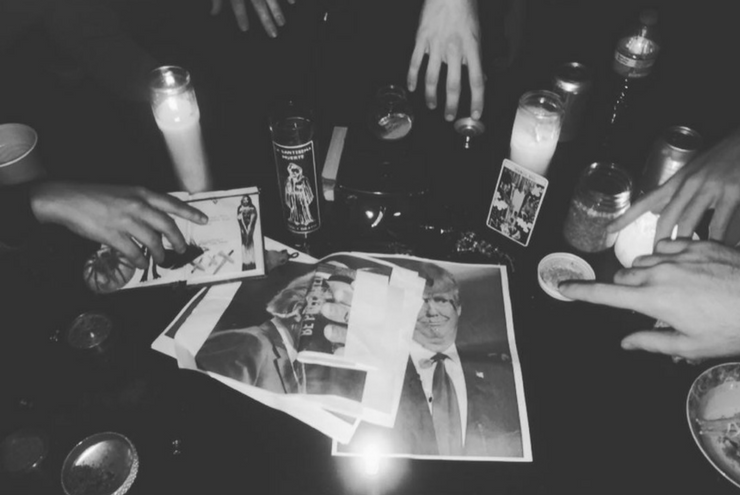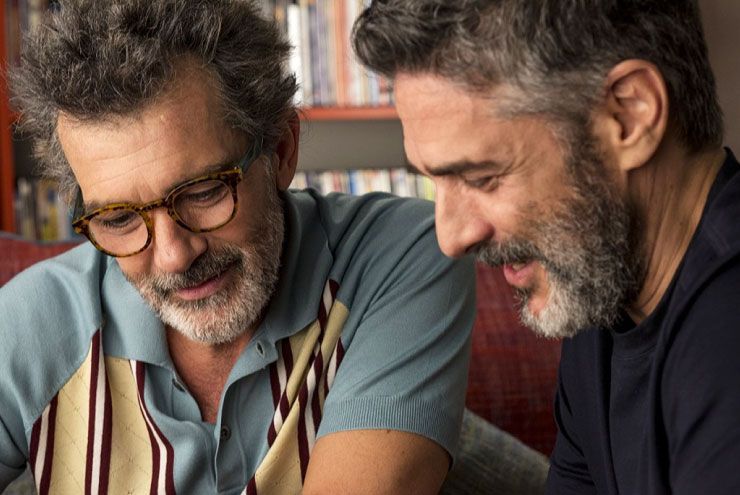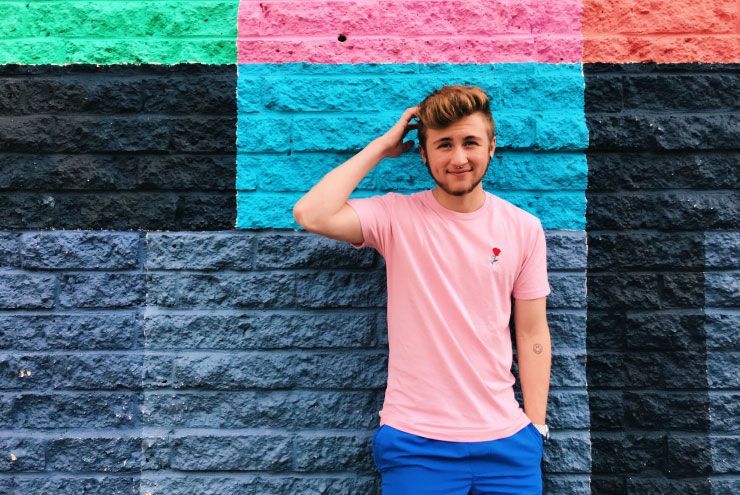A conversation with Barrett White and Addie Tsai
Editor’s note: This conversation has been edited for clarity and length.
The start of 2021 was rife with big events—on the macro scale, the nation watched in shock as a riot stormed the Capitol of the United States, and only a few weeks later, we witnessed our first female vice president step into her role. After a year under varying states of lockdown and social isolation, we rejoiced at the rollout of the long-awaited COVID-19 vaccine. At the micro scale, families around the nation saw their broods expand with the births of “COVID babies,” while others instead witnessed the growth of the passion projects they’d begun during the seclusion of quarantine.
Two such projects are just femme & dandy, a biannual literary & arts magazine for and by the LGBTQIA+ community on the topic of fashion, and Hearth & Coffin Literary Journal, an online quarterly publication that places priority on provocative, exploratory, and accessible works from writers of all identities.
The founders of these projects, Addie Tsai and Barrett White, respectively, are Houston-area locals who helm their projects with a consideration fostered by the shared experience of growing up queer in the South. Their journeys were varied for both—it’s not always linear and these two are proof of that.
White (he/him) studied creative writing in university before working in a law office, in professional communications, and as an editor for a small European publisher—and a lot of time as a barista in between. Tsai (she/they) left home at 18 and not only chased higher education but worked a myriad of jobs including a strange stint as a personal literary assistant and a grueling minimum-wage stay in the marketing world before becoming an educator herself.
Fully vaccinated and looking to dish with friends for the first time in a year, the two of them sat down to discuss the founding of their businesses, philosophies of leadership, and of course—their star signs.
Addie Tsai: I got laid off as a marketing assistant the day before 9/11.
Barrett White: Oh, gosh.
AT: Yeah, I woke up and was like, “Oh, the world is over.” But from there, I decided that I would try to be a teacher. I started by teaching at Writers in the Schools, and I was adjunct at Prairie View [A&M] and Houston Community College. Just teaching all over the place. At some point, I became full time at Prairie View for like three years, which was really important, but really grueling and really hard. Then I got a faculty intern job at HCC in 2008. You do that for a year and they decide whether to promote you to full time—I was offered a full-time position and I’ve been there ever since. I also started teaching for the low-residency MFA in Interdisciplinary Arts program at Goddard College and another low-residency program, the Mile High MFA in Creative Writing at Regis University, which I won’t start teaching at until this July.
BW: So your plate is a little full.
AT: A little! Very double-earth sign. So on top of that, why not open a magazine?
BW: So instead of being busy for only 23 hours of the day. . .
AT: I know! I mean, I am kind of the classic Virgo in that I don’t know what to do with myself if I’m not working.
BW: I’m the same way.
AT: Yes! So tell me your sun, moon, and rising. Oh, I love your nails.
BW: Well, I got my nails painted for the first time—
AT: The first time?
BW: Yeah! I had some friends going to get their nails painted and they asked me to come along. So I got mine painted black and put the Leo constellation on the ring finger of one side and the Cancer constellation on the other. Because I’m a Cancer-Leo cusp! Technically a Leo. Taurus moon, and Sagittarius rising.
AT: That’s a lot of different energies combined. I’m a Virgo sun, Capricorn moon, and a Libra rising. Lots of earth!
BW: Okay, I don’t know what this says about me [laughs], but my birthday is July 22. That’s the last day of Cancer. So I thought for my whole life that I was a Cancer. I really identify with all of the traits that are typically associated with being a Cancer, and I don’t really relate to the traits of a Leo. And when you look at the signs, you have Cancer then Leo—they are so different.
AT: Leo and Cancer, especially. Those are wildly different.
BW: But one day, I downloaded [the Co-star app] and it said I was a Leo and I was like, “I don’t think I can trust this app.” [laughs] Maybe like a year or two went by and I barely touched the app. Then, one night I couldn’t sleep and I was fiddling around with it like, “Why does it say I’m a Leo?” So I literally wrote an email to customer service!
[Both laugh]
AT: This is so good!
BW: It was like two in the morning! I don’t know what they must have thought when they came into work the next day and saw the time stamp on the email like, “This boy’s emailing us at 2:00 a.m., is he okay?’ But they answered back and they were very helpful! Apparently, the signs don’t set at midnight, it’s about planetary alignment. So they said that assuming my location and time of birth were correct, I must have actually been born within the first few hours of Leo that year. Oh, and they get their planetary alignment data from NASA. I guess I’m a Leo!
AT: I love that you wrote them! So, tell me more about Hearth & Coffin. Where was it born from, and why now? How long has Hearth & Coffin been out now?
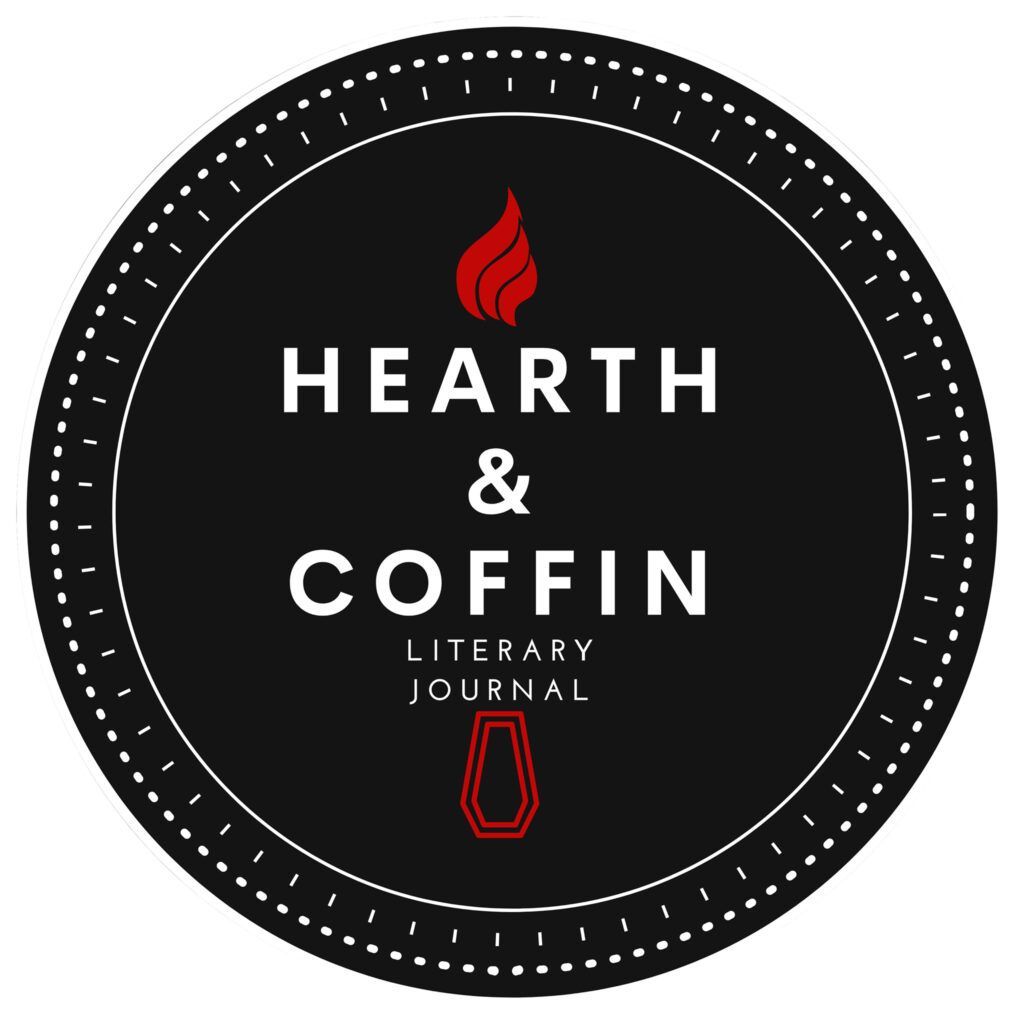
BW: So, we launched the website in November 2020, but the first issue didn’t come out until March 2021. I had wanted to do something like this for a long time, and for a few years there I didn’t know how I wanted to manifest it. Like, did I want to open up a magazine, or did I want to study publishing? Like do a career shift and go into publishing and publish novels, novellas, and short stories? I just didn’t know what I wanted to do. I put it off.
My partner works in marketing and part of my 9 to 5 is in PR, so for a minute there we considered opening an LLC where we would do marketing and PR together. I had did a lot of the research for that and was intrigued by the process. I got inspired to just jump in and do something. Like, other than the $300 filing fee with the State of Texas, what’s stopping me from going forward with this idea that I’ve always had on the back burner—publishing other writers’ works and offering that platform.
I could work for another publisher, but I wanted to have a more hands-on role in deciding what gets published rather than just working as part of a larger machine. Don’t get me wrong, with other publishers, the lessons you’ll learn working there are quantifiable. But I didn’t want to be told what is worth publishing and what is not. I wanted to be able to publish new writers, writers who maybe do still need a little bit of editing because they’re brand new to writing, or maybe English isn’t their first language. For example, my partner is from Venezuela and English is his second language. He asks me to edit his work from time to time. While going through these motions, it occurred to me that there are probably other writers out there who are not writing or not publishing in the English market because they don’t think that they fit the criteria of what it means to be a published writer. And I want to offer space for that.
If I were working for a larger publishing company, I don’t know that I could necessarily do that, at least not easily or not until I’ve worked my way up to some larger platform. So, if I have the means to do it, I should do it. We were all locked down anyway last year, so I started taking steps. I filed the LLC in October—big step!
Now, with just femme & dandy, I feel like you’re well positioned for success. You have a sizable staff, a lot of collaboration. Hearth & Coffin is just me and one other person, my poetry editor, Rachael Matthews. We both have experience as writers and in publishing, but we do kind of feel like we’re flying by the seats of our pants. But the fear of us doing that doesn’t outweigh the energy and the desire to make the platform more accessible to more people. Part of our mission is publishing accessible and evocative work, because I feel like gatekeeping in writing can be a problem and I don’t want that to exist where I’m working.
AT: That’s amazing.
BW: I feel like it was a long time coming with disconnected and outside ideas, but then the actual work came in very quickly within the last few months of 2020. It feels very new and very old all at the same time.
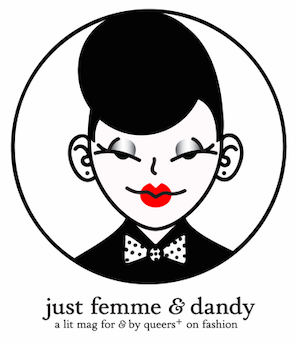
AT: I was just thinking that the first step of getting to just femme & dandy involves you because of the queer fashion folio I did with Anomaly, called “Queering in Plain Sight.” So, I’ve been editing fiction for Anomaly in varying capacities for a couple years now. I just got promoted to co-fiction editor. Woo! But the folio editor asked me a while back if I had any ideas of folios I wanted to pitch, curate, and edit. I’ve been thinking about this for several years, that there’s no real literary art space—that I’ve found—that’s dedicated to queer fashion. I’ve seen DapperQ—you know, things that are dedicated to a specific aesthetic or a specific gender expression—but I haven’t yet seen anything specifically for artists’ expressions of the various ways that people in the queer community not only dress themselves, but how fashion icons give them permission to understand their relationship to their gender identity and queerness. Also, the way that queer fashion works is often a secret code to let people know you’re queer. Especially with people who are AFAB, femme, or butch—sometimes that’s the only way you know it’s safe to approach someone, through these queer markers.
I’ve been waiting around to see if someone else was going to do it, but I hadn’t seen anything. So when Anomaly’s folio editor asked me if I wanted to pitch anything, I thought, Well, I have always wanted to do queer fashion. Through Anomaly’s platform, I curated a folio of queer writing—Barrett was in it! It’s still online, it’s called Queering in Plain Sight. That was sort of my experiment in what people would submit.
Because of the way that fashion works out in the world, it was important to me that just femme & dandy was not going to just publish writers, but also hopefully artists, dancers, and obviously fashion designers. So that’s another boundary that I’m trying to break with the magazine. And I have this really great co-editor-in-chief, Sarah Sheppeck, who is really amazing at puns. She came up with most of the titles of our categories. So for example we have “Cancel and Gretel,” our category on dealing with ethics—plus-sized fashion, accessible fashion—anything to do with ethical fashion. Then we have a DIY fashion category, which is “Sew What.” We have “Sole Mates” for shoes, and “Mane Attraction” for hair, and “Afrodisiac,” a column within “Mane Attraction” that focuses on Black hair. We have a bunch of categories and a dedicated editor for almost all of them. They are almost all editors of color, which was very important to me, and they run the range of gender and sexual identity.
It’s really hard to start a journal, and I would love to hear your side. It’s easy to get excited about it because what else are we supposed to do right now? But getting submissions has not been easy. But yeah, it’s hard. It’s a lot of work. Lots of nuance is required. We’re going to launch in June, for Pride.
BW: Yay! Appropriate.
AT: Yeah! So one of our contributors, their name is rick h m, they just got their master’s degree out of Boulder, Colorado, in dance, and they have this really incredible dance film that they did for their thesis that we’re going to publish an excerpt of. They’re connected to this whole team of femme DJs that we’d love to have at the launch.
BW: Oh my god.
AT: I’m super excited. And, in what I’ve been calling “the after”—what I call post-pandemic life—my hope is to have runway shows and queer fashion events. Something bigger than just a typical literary magazine. I feel like every time I talk about the internet I sound like I’m 50 years old, but the digital age we’re in, we’re waiting for the literary magazine to be different than it has been.
BW: Mhm.
AT: I mean, I really love print magazines—they’re really important—but the explosion of online publishing has really afforded so many amazing things. So much neutralization around who is allowed to be published and which voices we hear. Social media has just improved that even more. The way that we contribute to the literary landscape has just been expanded.
BW: Of course.
AT: And I’m so tired of this policing of language, too. Like if something needs a little more editing—
BW: Communicate with the writer. I think it’s important to not just shut someone out from the opportunity to tell a story just because it’s not polished when you receive it. My title, for example, with Hearth & Coffin is not just the founder, but the editor-in-chief. I think that I and other editors-in-chief need to embrace that editor is part of the title. I have a small staff—it’s just two of us here—
AT: That’s wild.
BW: I don’t have any other editors that I can delegate work out to and set deadlines for. So, if I’m going to take it upon myself to do this project, I think that taking on this role and making it work for both the journal and the writer is my beast to leash. I can’t just start a project and then relinquish myself from the responsibilities that come along with it because I don’t feel like it.
I want to see a writer’s work through to the finished product. And I don’t mean what I think of as the finished product, I mean that I want to see the writer’s vision come to life. If I’m editing all the works from purely my own perspective as a white cisgender dude from Houston, where we don’t have a southern dialect, and someone is writing with AAVE in their writing or they’re writing in a drawl or brogue and I don’t pick up on that because I think it’s a misspelling, then I’m doing that writer a disservice by taking it upon myself to omit or edit their language.
I’ve done so much research on the gay language of Polari that if I’m going to take that so seriously, I need to respect that there are so many other people with different lived experiences than myself, who are probably writing things that I just don’t understand because I don’t have the cultural context. And if they’re going to be kept out by gatekeeping in other literary circles, I don’t want to see that happen in the one that I’m running. I want to work with writers to ensure that their visions are coming to life. If something needs a little editing based on the storyline, I’m happy to do that. But I’m not going to police someone’s words.
AT: I think you’re really pointing to how white supremacist and colonialist it is to gatekeep and police through “your” standard of what a polished piece looks like, of what language is supposed to feel like. You know, I don’t always get into arguments about using they/them pronouns, but decided to participate in one. This person was going on and on about how “the only people who can use they pronouns are schizophrenic.”
BW: Oh my god!
AT: “Because they’re the only ones who see themselves as multiple people” or whatever. And I was like, there’s so much racism to the way that English is given this authorial tone. And I think you’re right, we need to question. I mean, there’s 500 different ways English is expressed in this country. By the way, do you think that you will ever add on staff?
BW: We would like to, but it’s just the two of us for now. Our next hurdle is that we want to become a paying market for our writers. It’s unfortunately not possible at this time, but we hope to make it happen in the near future through grants, sustaining memberships via our Support page, and eventually through advertisement revenue. That’s our main goal at this time, is to be able to compensate our writers.
AT: Now that your first issue is out, is there anything you found to be exciting or surprising?
BW: I was surprised at how many people—it took a minute—were actually willing to submit.
AT: Yeah, one of my good friends got in there! Amanda Auchter!
BW: Yes! Well, so that fear of no one submitting to a new journal with no issues behind it was the impetus behind my idea to have a Guest Author Series that went online before the first issue, where I sourced writing from poets and authors I knew.
AT: That was a smart idea, yeah.
BW: I wanted to have something there on the website to show people that we are publishing work and that this isn’t a dormant website. So I reached out to a bunch of writers—you included—and got some incredible work published. I was so pleased. I reached out to fantastic writers, first of all, so I shouldn’t have been surprised that the writing that came in from all of you was so good. But when it did come in, it was still so surprising that, Oh man, I get to publish this! This writing is so incredible, and it really set up the style of writing that I would love to see. It was a good mix of prose and poetry, there was a queer aspect to it, and I think once we had some work on the site, that’s when we really saw submissions come in. And our second issue actually comes out in June as well.
AT: Yay!
BW: We publish quarterly, so the first month is our month off, our vacation. The second month is open submissions, and the third is when we have our review, editing, and publishing month. Then it starts all over!
AT: So how many issues per year?
BW: Four.
AT: That’s a lot!
BW: I know. So we publish a new issue at the end of March, June, September, and December. But I don’t think they’ll all be as big as the first issue, because the first issue had a four-month submissions period since we thought no one would submit—but then they did. So subsequent issues probably won’t be as big, unless we take off. Now, I know your first issue isn’t out yet, but have you had similar experiences, or other things that surprised you so far?
AT: So, doing this theme makes it harder to get submissions. I think people are going to have to create new work for this theme. So, we’ve gotten a handful of submissions, but not many yet. There’s a lot of excitement around it, but not as many submissions. But I think a lot of it is COVID exhaustion, the end of a semester . . . but also I’ve been pleased that the people who I have solicited for work have all been excited to send work to the magazine.
But also, I knew I wasn’t going to do this without at least one person behind me. It’s too much to do alone. Sarah and I actually met because she reviewed Dear Twin [a novel by Addie Tsai] and we connected. Sarah’s a brilliant Black femme who plays a lot with fashion in her aesthetic, so I reached out to her like, Hey, I’m going to do this thing, do you want to do it with me? And she just immediately jumped on board. She’s been really incredible. When I’m just really tapped out, she jumps in.
Anyway, I think queer fashion is one of those things that’s hard to make when we don’t get to do anything or go anywhere, and I know some people dress up for Zoom, but right now we don’t get to go out into the world and buy clothes or think about makeup. But just femme & dandy’s first issue will have drag, we’re going to have this hybrid dance-fashion-runway film, we’re going to have writing, and this photo spread by a fashion designer—for starters. As we transition back to reality, we’re going to have some cool stuff in the magazine.
You can see more of Addie Tsai’s work on her website. You can also find her on her personal Instagram, or a fashion series she’s been doing during the pandemic called Addie Wears History. Barrett White can be found on his homepage or Instagram. For more information on these new literary projects, please visit the homepages of just femme & dandy and Hearth & Coffin.
just femme & dandy’s inaugural issue will launch in June 2021. They are currently open to submissions for designers who are LGBTQIA+ to feature on their website (just femme & dandy takes 10% of sales, designers keep the rest). You can reach out to them at [email protected]. Please follow them on Twitter or Instagram, or check out their website. Issue 2 of Hearth & Coffin will be released on June 29, and submissions will reopen for Issue 3 on August 1, 2021. For more info on submission guidelines, please visit their FAQ. You can find them on Instagram, Twitter, and Facebook.



